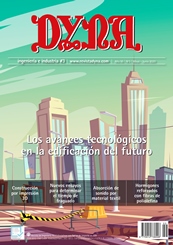PRODUCTION OF A DUAL PHASE STEEL FROM A LOW CARBON MICROALLOYED STEEL
Keywords:
AHSS, Doble Fase, Tratamiento Termomecánico, Tratamiento Intercrítico, Dual Phase Steels, Heat Treatment, Continuous Annealing, Hot Rolling.Abstract
A dual phase steel was manufactured with the chemical composition established for a microalloyed steel, in order to take advantage of the hardening mechanisms of both steels. The treatment temperature was established based on the critical transformation temperatures obtained by dilatometric techniques and simulated phase transformation diagrams. The specimens were hot rolled in a six continuous passes with a total rolling time of 65 seconds up to 47% thickness reduction. Optical microscopy and scanning electron microscopy were used for microstructural characterization in order to obtain the average ferritic grain diameter and volume fraction of ferrite and martensite. Vickers microhardness for each phases was determined and tension tests were performed to obtain the ultimate tensile strenght, 0.2% offset yield strength, percent reduction in area and percent elongation. Microstructures composed of ferrite and martensite were obtained, with a 35.98% average percent of martensite. The average ultimate tensile strenght values and and percent elongation were 719 MPa and 22%, respectivelly. The use of simulated time-temperature-transformation and continuous-cooling-transformation diagrams, as well as the thermal history of thermomechanical and intercritical processes, proved to be useful in the development of processing routes for the manufacture of dual-phase steels with a specific chemical composition. The precipitation mechanisms present in microalloyed steels enhance the microstructure refinement in a dual phase condition.Downloads
Published
2020-05-01
Issue
Section
ARTICULOS

